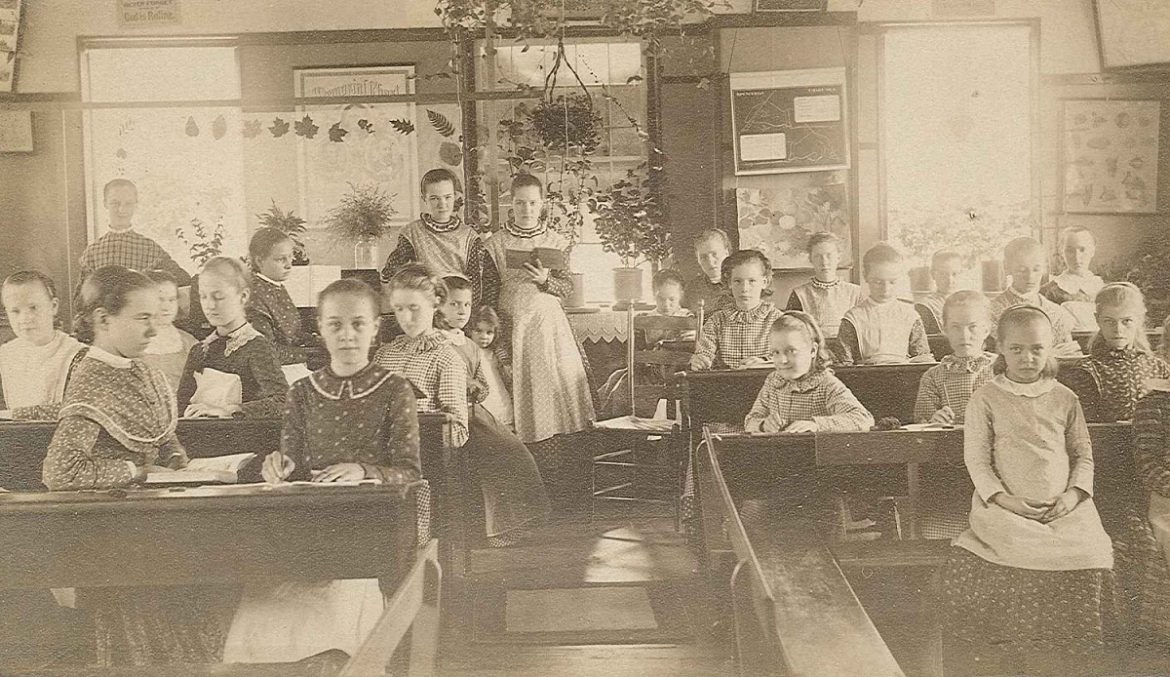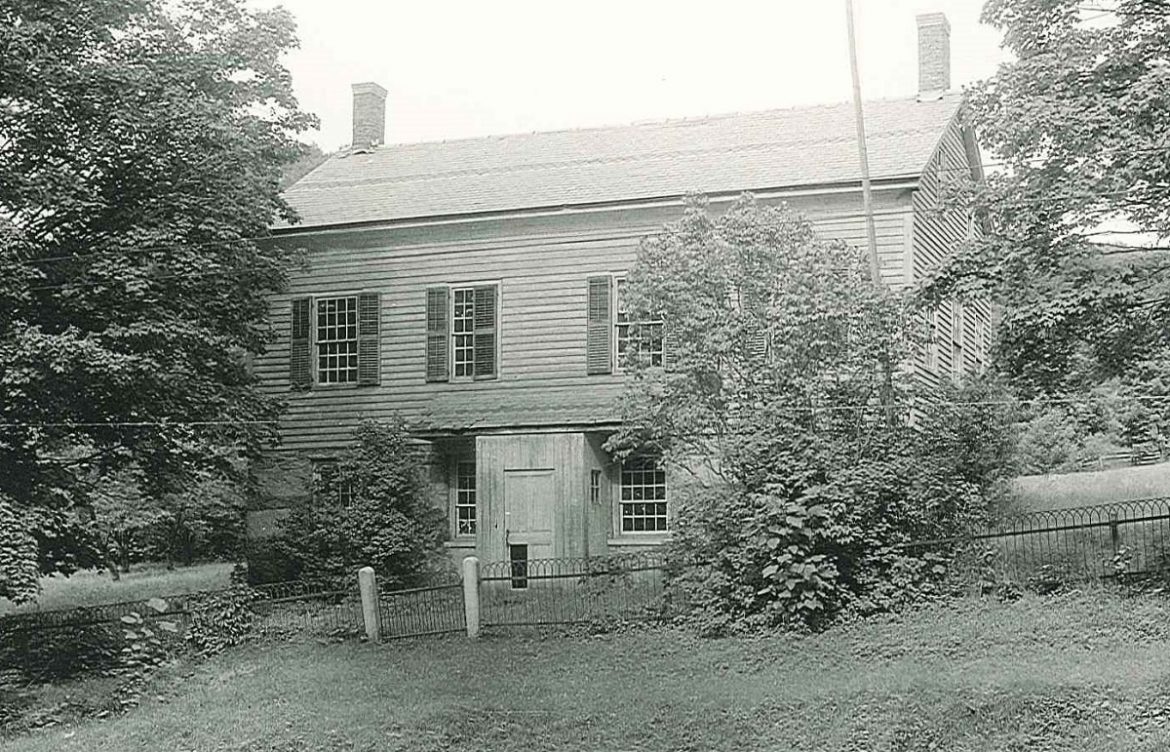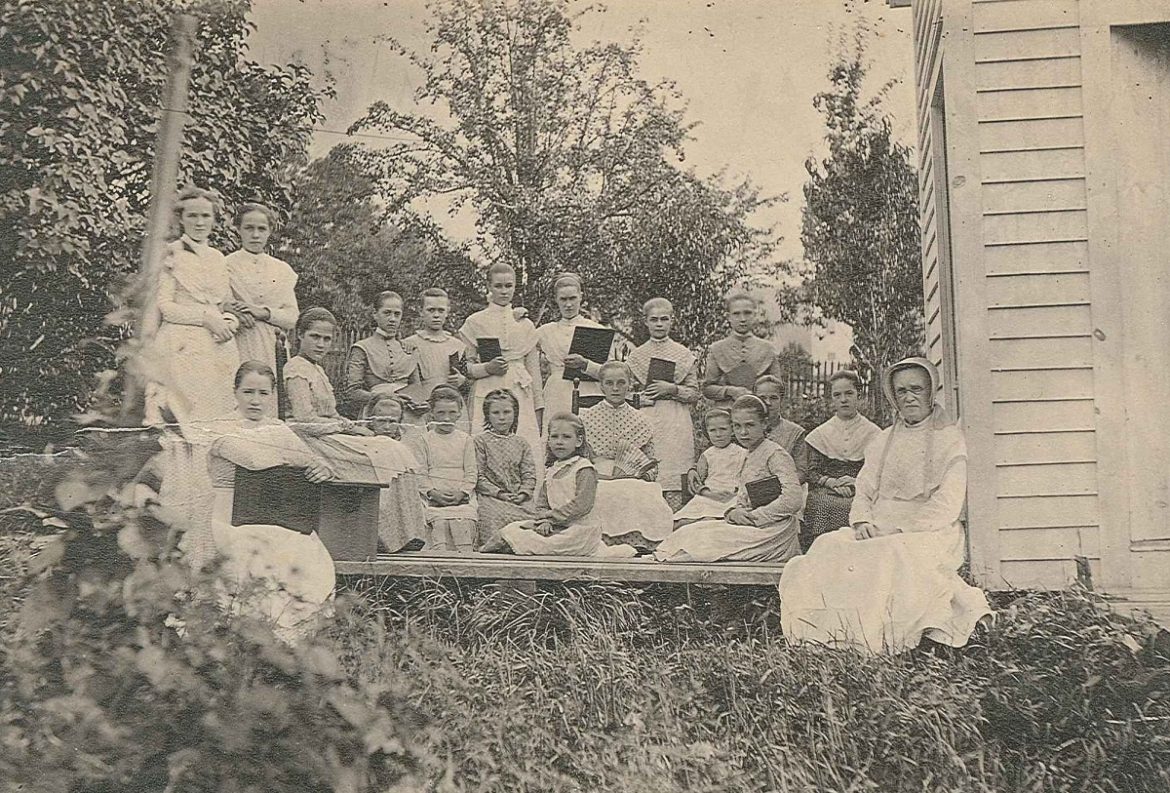
Cabinet card of the Shaker School, ca. 1880. Shaker Museum | Mount Lebanon 1981.19387.1.
Those Shakers assigned to teach school found their work challenging. Yet it is clear that she and many, if not all, of the teachers at the Mount Lebanon school took their responsibilities seriously.
In June of 1858 Eldress Anna Dodgson, then teacher of the school at the Church Family, Mount Lebanon, began a diary entitled “A Memorandum for myself. To be remembered by myself & concerning no one! but myself.” In the first entry, she wrote that the commissioner of schools in Hudson requested “to be favored with a piece of composition” from the students, which caused “considerable excitement and perhaps some uncomfortable forebodings.” The students, she went on, “attempted to comply with his requests; but being defeated, I thought it most prudent to resign the whole affair without either giving my judgment or urging my opinion concerning it. I am thankful this with many other things is not my business to see to.”
Those assigned to teach school found their work challenging. In 1819, Brother Isaac Newton Youngs wrote that he would be “glad to have to the time come when I need not be bound to attend to the school, for it is quite a burden, & a hard matter to give satisfaction either to [my]self or others.” A Church Family journal noted in 1873 that Sister Emma Jane Neale went to the infirmary “to be doctored being quite out of health,” because she had had “a steady, taxing season in school.” Unfortunately for Sister Emma, she had “given so good satisfaction, I presume she will have to teach next season.” And in the summer of 1861, Anna Dodgson wrote in her “Memorandum,” “I find myself nearly at the close of another school term. I am as usual in rather a moody condition.”
Yet it is clear that she and many, if not all, of the teachers at the Mount Lebanon school took their responsibilities seriously. Though Brother Isaac found the school “quite a burden,” he obtained a certification in teaching which permitted the school to receive public funding, and wrote of the school that “for our honor… I wish to have the world see cause of commending us.” Brother Isaac, a master of all trades, even worked on the design and construction of the school building, as well as the students’ desks.

By that time, the school was subject to twice-yearly inspections from the Town Superintendent, and had to be taught by “qualified teachers in possession of a certificate of qualification as required by law,” according to a record of the annual reports filed. For the year 1856, the school report stated that “our school house is in good repair” and that “the yard, fences, and outbuildings are all clean, commodious, & in good repair.” The Shakers had to affirm that school was taught for the prescribed period of time, and had to report on the number of books in its library, texts for a curriculum that included such subjects as geography, astronomy, and chemistry. Eventually the Shaker schools attained a reputation for excellence, and taught children who lived near but not in the community as well as those raised by the Shakers.
Beyond the standards required by the government, the lesson plans and self-evaluations Eldress Anna Dodgson recorded in her school journal upon the close of each school term indicate the high standards to which she held herself. At the end of the 1861 term, she “[reviewed] my labors as I always do, with some pleasure and satisfaction and some regret.” She wrote in 1860 that “I have not made much progress in Arithmetic this season… I find myself faulty indeed,” and on teaching composition, “Great difference in abilities in this art, no proficients and many defects. I cannot make what is not. What shall I do?”

She also made notes as to what had worked well such as in teaching conduct for which, she wrote, “The girls have reduced some of the rules of manners to Dialogues. I like the plan very much.” Also, “I have for a short time had each scholar give some useful information at the commencement of afternoon schools and I hope to continue this….” In 1863, she wrote that “Amelia [Calver] & Helena have taught [gymnastics] and been very successful.” Two years later, Sister Amelia would herself become a teacher in the school, and continued to serve in that capacity until 1883. As Eldress Anna wrote, “I find children will be children [and] old experienced heads must generally grow so with time.”